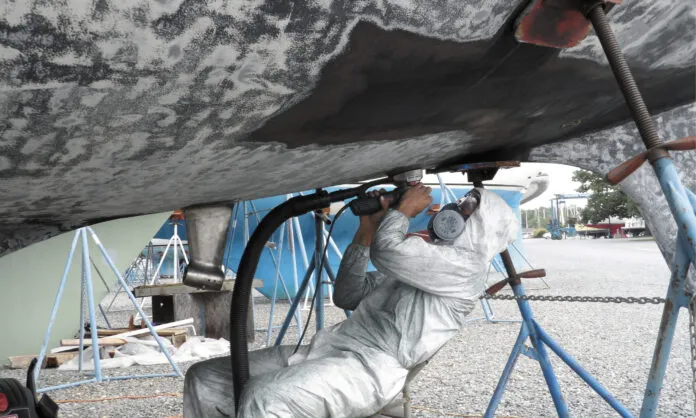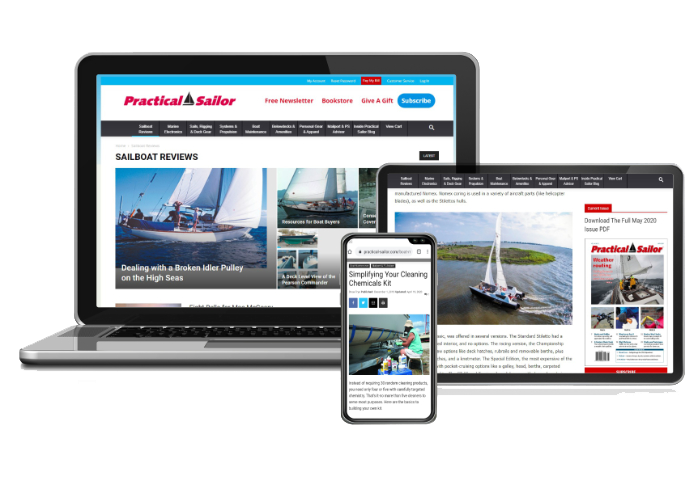One look at the safety data sheet for an antifouling paint, and a quick listen to the controversy surrounding the effects of antifouling paint on marine life, and you should be scared silly when it comes to painting and sanding. It contains solvents, paint resins, and marine toxins meant to repel marine life. But how hazardous is the stuff, really, and what protective equipment is needed?
To continue reading this article or issue you must be a paid member. Sign in
Join Practical Sailor
Get full access to Practical-Sailor.com – more than 4,000 articles – for just $34.
Join today and save 42% off our full price.



































Thank you Drew,
Excellent article and i will print and put with my pre-season painting file.
We are preparing to sand and repaint the hull with Ablative Anti-fouling paint on our 06 41DS.
Could you, if possible do a comparison on full face sanding/painting Masks with replaceable filter cartridges on each side that have plexiglass glass or lexan face enclosures.
These have come down in price and offer full coverage over the mouth, nose and eyes. And are cleanable and reuse-able year over year with and offer the some of the best protection for painting and sanding.
Our Marina in RI requires us to tent and put down base tarps to prevent removed paint particles from being blown around the marina.
Our sander will be connected to a good vacuum source by hose as well to reduce as much as possible the collection of removed paint.
Thank you.
I’m assuming you mean full face respirators like the popular and well respected 3m 6900 series. Full face masks protect the eyes and provide a slightly higher (100 vs.95) level of respiratory protection due to the potential for better fit. Firefighters wear full-face respirators for these reasons. But there are a few things to consider.
Fit. Even more than half-face respirators, proper fit and protection require that the mask fit YOUR face. See “Respirator and Mask Safety,” March 2020. I wear 3M Scott masks because they fit my individual face better. Whatever you chose, do a fit test, and if it does not fit, return it.
Glasses. Fitting glasses to full face respirators is complicated, and wearing contacts, even with a full face mask, is not great when working around chemicals and dust. Name brands can be fitted with spectacle adapters, but this mean buying the adapter, another set of glasses, and they still don’t fit well. You cannot wear your regular glasses; the bows break the seal at the temples.
Heat. They’re great when it is bitter cold, but in the summer heat they are nearly unbearable. In industry we would have them equipped with supplied air that was cooled. I’m a big believer in efficient vacuum sander set-ups and keeping the breeze at my back when painting. Inside the cabin, a box fan in a deck hatch can be a life saver. Do not under estimate the risk of heat stroke. Read “Beat Boatyard Heat with Personal AC,” September 2020 for a review of body cooling.
I’ve spent many hundreds hours in full-face masks.